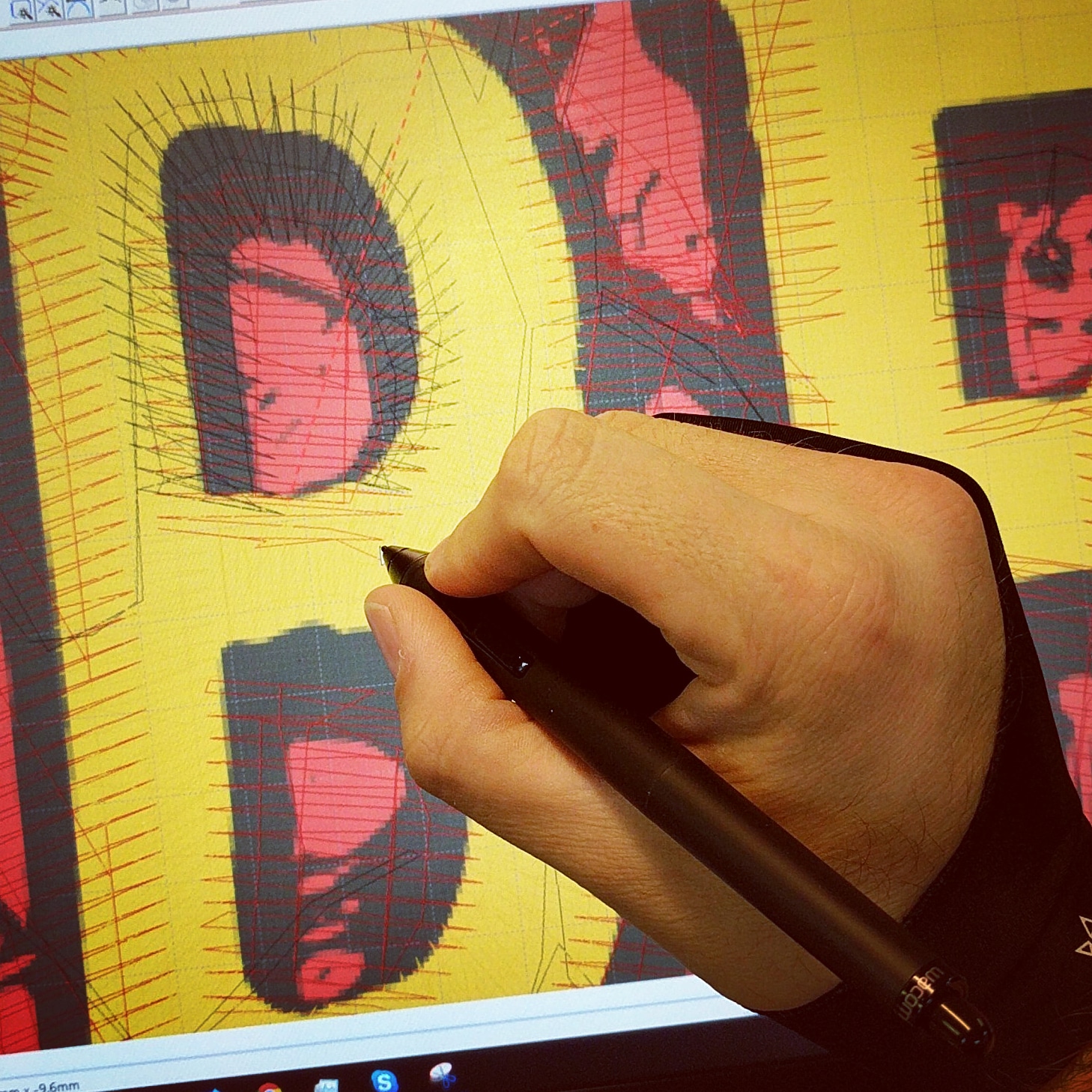Simplifying the Art of Embroidery Digitizing: Step-by-Step Guide
As innovation proceeds to advancement, the digitization procedure has come to be a lot more accessible, permitting lovers to bring their detailed styles to life with convenience. In this guide, we will certainly decipher the intricacies of embroidery digitizing, damaging down each step carefully to improve the procedure and empower both newbies and experienced embroiderers alike.
Recognizing Embroidery Digitizing Software Program
Embroidery digitizing software program works as a critical tool for changing elaborate layouts right into digital layouts compatible with embroidery equipments, helping with precise stitching and modification. This specific software program allows individuals to import various photo file formats, such as JPG or PNG, and transform them into embroidery machine-readable styles like DST, EXP, or PES - Digitizing for Embroidery. By making use of attributes like stitch editing, rug choices, and string shade option, digitizing software application allows customers to regulate every facet of the design process
Furthermore, advanced needlework digitizing software program supplies tools for creating complex styles, changing stitch thickness, and including elaborate information. Customers can also preview the style before sewing it out, making sure precision and minimizing errors. Additionally, several software programs supply automated functions that aid improve the digitizing procedure, saving time and initiative.
Recognizing the capacities of needlework digitizing software program is necessary for accomplishing premium results in embroidery projects. By understanding this device, embroidery enthusiasts and professionals can release their imagination and bring complex styles to life with precision and performance.

Selecting the Right Design File
After familiarizing yourself with the capacities of needlework digitizing software program, the following vital action in the process is choosing the best design file for your task. Digitizing for Embroidery. When picking a style data for embroidery digitizing, it's necessary to consider the intricacy of the layout, the dimension of the final product, and the kind of textile you will certainly be functioning with
For complex layouts with fine details, a high-resolution picture or vector file is recommended to ensure that the embroidery equipment can properly duplicate the layout. In addition, the dimension of the last item plays a substantial duty in picking the appropriate layout data. Bigger layouts may call for greater resolution data to maintain quality and sharpness.
Furthermore, the kind of fabric you will certainly be stitching on influences the selection of design data. Different textiles may need adjustments in the layout file to make certain that the stitches are appropriately aligned and the style looks like planned. By thoroughly picking the best style documents based upon these elements, you can set on your own up for an effective embroidery digitizing process.
Digitizing Tools and Methods
Making use of specialized software program and precision techniques, digitizing tools are necessary in changing intricate designs into embroidery-ready data. Embroidery digitizing software application, such as Wilcom, Hatch, or Embrilliance, gives the necessary platform to convert artwork into stitch data. These programs use attributes like stitch editing and enhancing, underlay options, and text devices to make certain the layout converts perfectly onto material.
One of the vital techniques in digitizing is developing a clear course for the needlework device to comply with. This entails digitizing each element of the design with precision, identifying stitch types, densities, and directions. By utilizing devices like digitizing tablet computers or software-specific plugins, embroiderers can attain a high level of accuracy in their digitized that site designs.
Furthermore, mastering the art of underlay stitching is important for generating top quality needlework. Underlay sewing maintains the fabric and creates a structure for the style, ensuring that the end product is both visually enticing and resilient. By comprehending these digitizing tools and techniques, embroiderers can boost their craft and bring complex styles to life with precision and performance.
Personalizing Stitch Types and Instructions
The option of stitch types can considerably impact the total appearance and appearance of the stitched style. By tactically integrating these stitch types, embroiderers can attain deepness and dimension Visit This Link in their styles.
Additionally, the instructions of stitches plays an important duty in boosting the aesthetic appeal of the last needlework. By experimenting with different stitch angles and patterns, embroiderers can bring their styles to life with impressive detail and ins and out.
Screening and Refining Your Digitized Layout
To ensure the accuracy and high quality of your digitized style, complete screening and improvement are important steps in the needlework digitizing procedure. As soon as you have actually finished the digitization of your design, it is essential to evaluate it before waging the actual embroidery. Examining permits you to recognize any kind of potential issues such as thread breaks, sew thickness troubles, or layout distortions that might affect the outcome.

After testing, it is essential to refine your digitized design based upon the responses from the examination sew-out. This may involve tweaking sew settings, adjusting densities, or making changes to the total layout to attain the wanted end helpful site result. By repeating with testing and improvement, you can tweak your digitized design to excellence before moving on with the real embroidery procedure.
Final Thought
To conclude, understanding the art of needlework digitizing requires an extensive understanding of the software, selecting the appropriate layout file, making use of digitizing tools and strategies, tailoring stitch types and instructions, and screening and fine-tuning the digitized design. By complying with these steps, embroiderers can streamline the digitizing procedure and produce top quality stitched styles with precision and performance.